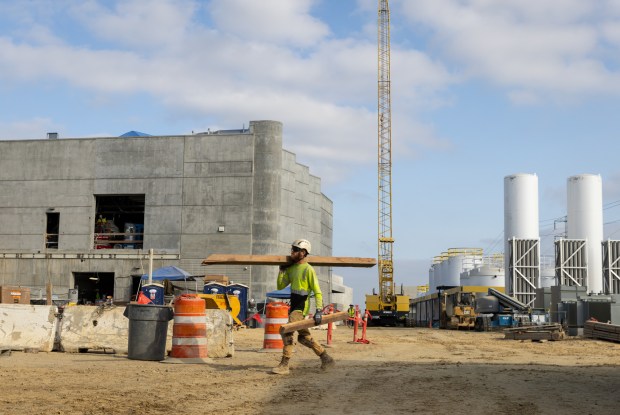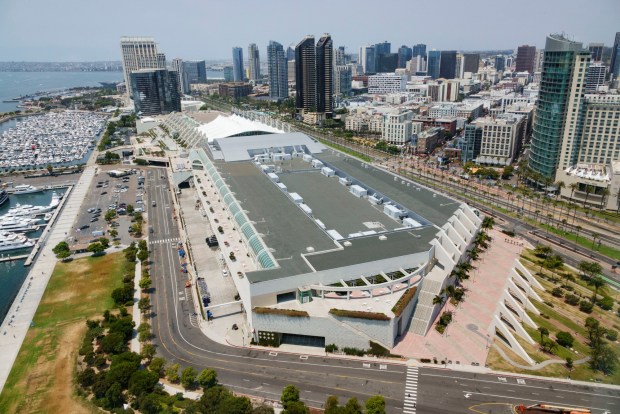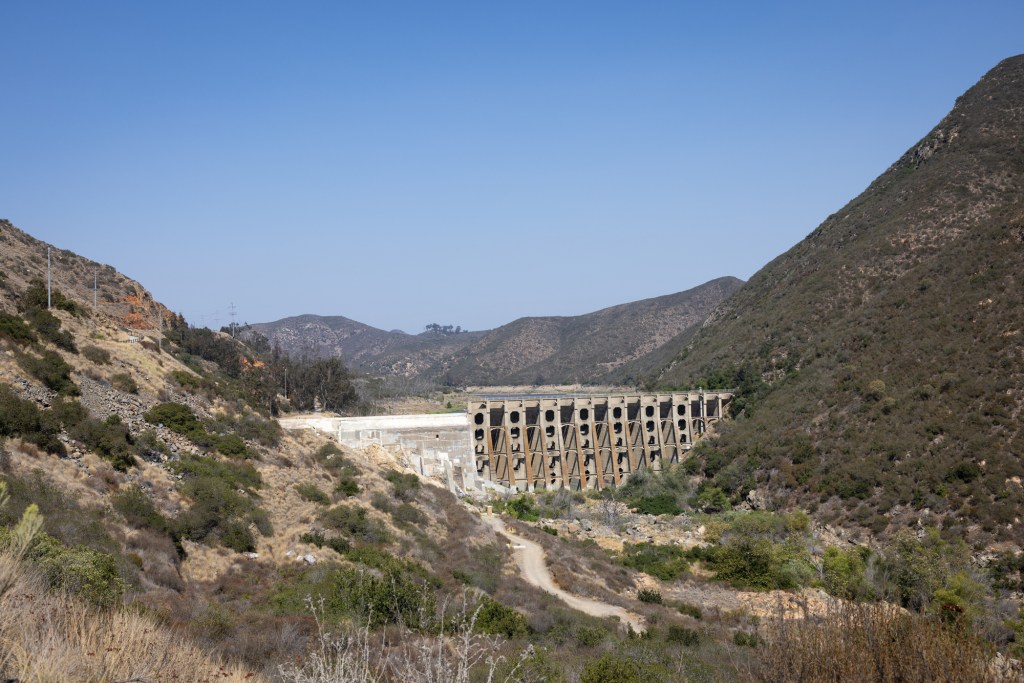San Diego is stepping up its efforts to tackle billions in overdue infrastructure projects by shifting to a model where contractors help design projects, instead of just building ones already designed by city engineers.
Officials expect the new model, which the City Council approved last week, to reduce cost overruns, improve quality, boost transparency and help the city tackle its massive infrastructure backlog more quickly.
“These changes aim to help the city meet growing infrastructure needs by streamlining the capital improvement program, enhancing public works contracts and encouraging innovation,” said city engineer Rania Amen. “This diversified approach will enable the city to better manage costs, schedules, risks and quality.”
City officials say the new method will be used for large and complex upcoming projects like the Hodges Dam replacement, convention center expansion and new drainage channels in parts of southeastern San Diego that flooded in January 2024.
They say early collaboration between a contractor and city officials boosts understanding of project goals and agreement on them, making projects easier to build and allowing innovations that improve quality.
San Diego faces nearly $12 billion in infrastructure projects over the next five years, and the city expects to have only about $5.5 billion to spend on infrastructure during that time.
That leaves a $6.5 billion gap, which is the largest ever. And the gap has more than tripled since early 2020, when city officials estimated it at $2.16 billion.
Officials say the new method could help them more quickly replace the city’s daunting amount of aging infrastructure — a result of so much of it having been built during the city’s population boom of the 1950s, 1960s and 1970s.
Because contractors will be chosen based on qualifications instead of submitting the lowest bid, costs for some projects may be higher, city officials said.
But because the new model fosters earlier collaboration between the city and the contractor, cost overruns are much less likely and savings from mutually agreed-upon value engineering are more likely, they said.
Some projects might start more slowly because a contractor must be chosen before design begins, but the new model is likely to end up being faster overall because it will eliminate some tasks now handled sequentially, the city’s independent budget analyst said.
A key element of the process is the contractor being required, partway through the design process, to propose a guaranteed maximum price. The city can either accept that price or reject it and find another contractor.
Councilmember Sean Elo-Rivera called the new model an important change in city policy.
“We’ve actually missed out by not having these tools in the city’s toolbox,” he said.
The new tools are called “progressive design-build” and “construction manager at risk.” The key difference from the city’s existing policy is that contractors will participate in design.
The city’s existing process has design work being completed either by city engineers or outside architects before a contractor is chosen — a decision based on which contractor submits the lowest bid.
City officials said that method will still be used for smaller projects with clear scopes and fully developed plans.
They said the progressive design-build approach will be used for projects that require significant innovation and that face potential permitting and regulation headaches, such as sewer and water projects.
They said the “construction manager at risk” approach would likely be used for projects that require more design work, such as dams and large buildings.
Officials said other city projects that are candidates for the new method include Fire Station 49 in Otay Mesa, a proposed joint training facility for police and firefighters in Kearny Mesa and Phase Two of Pure Water — the city’s sewage recycling system.
 Construction crews work on the Pure Water facility in mid-September 2024. (Ana Ramirez / The San Diego Union-Tribune)
Construction crews work on the Pure Water facility in mid-September 2024. (Ana Ramirez / The San Diego Union-Tribune)
While San Diego hasn’t previously used these construction methods, many other local agencies have since they first became common about a decade ago.
They were used to build the new Terminal 1 at San Diego International Airport, the sheriff’s Ramona substation and the San Diego Trolley’s Blue Line extension to University City.
“Early contractor involvement is critical,” said Matthew Fleming, a local contractor.
Michael Daneshvar of Turner Construction said the new method is the right move.
“It’s better value for the city of San Diego and better value for the taxpayers,” he said.
Mike Guzzi of Clark Construction said shifting to the new method will encourage higher-quality contractors to pursue the city’s projects.
“I think all of the major, competent and qualified general contractors in the area will lean more into San Diego projects,” he said.
Councilmember Marni von Wilpert said it can’t hurt for the city to have multiple possible ways to tackle projects.
“We need to broaden the options,” she said.
 An aerial view of the San Diego Convention Center, as pictured on Aug. 4, 2025. (K.C. Alfred / The San Diego Union-Tribune)
An aerial view of the San Diego Convention Center, as pictured on Aug. 4, 2025. (K.C. Alfred / The San Diego Union-Tribune)

